Here are 5 Simple Composition Techniques / Tips for you to create beautiful Wildlife images
These 5 tips will help you to take your Wildlife Photography to the next level.
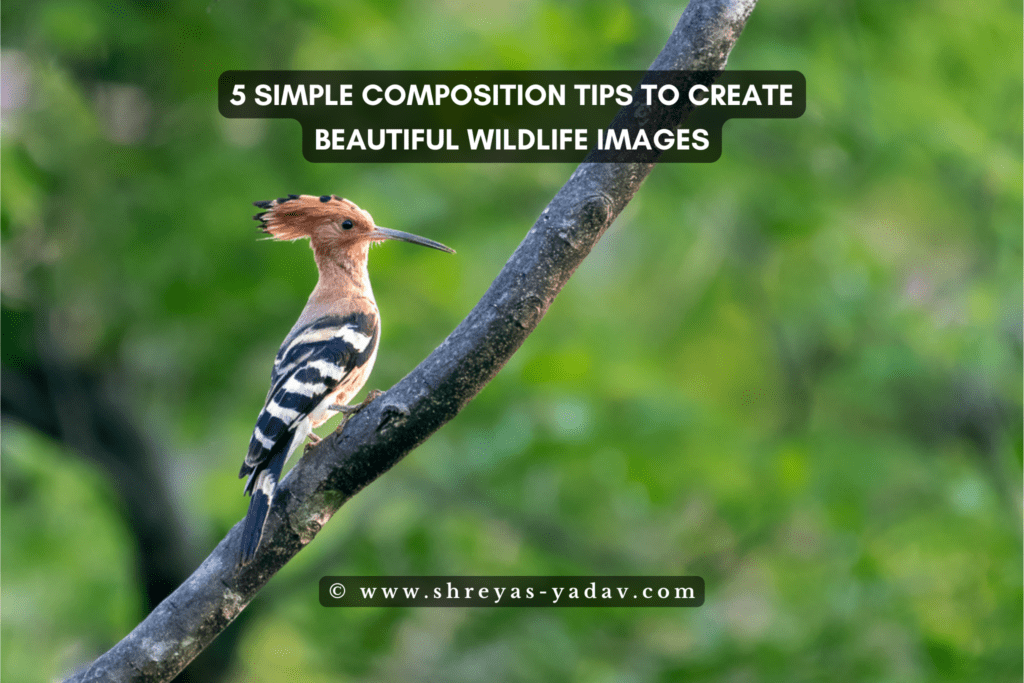
I can’t take awesome wildlife images because I have an entry-level camera.
My images aren’t looking excellent, Ummm! I think it is because my camera is not full frame, it does not have a high dynamic range and high ISO capability. it’s time that I upgrade to the higher version of the camera.
Does this sound similar to you? Are these types of thoughts stopping you from making a beautiful Wildlife image?
Well, I have good news for you. Today I am going to show you the exact 5 Simple composition techniques that I use to create stunning Wildlife images.
And the best part is
These composition techniques work great with any type of camera.
You can start using these techniques to create stunning Wildlife images right away.
Let’s dive right in.
Here are 5 simple tips for creating beautiful Wildlife images
1. Rule of Thirds
Let’s start with one of the fundamental rules in photography- The rule of thirds.
Refer to the images below.
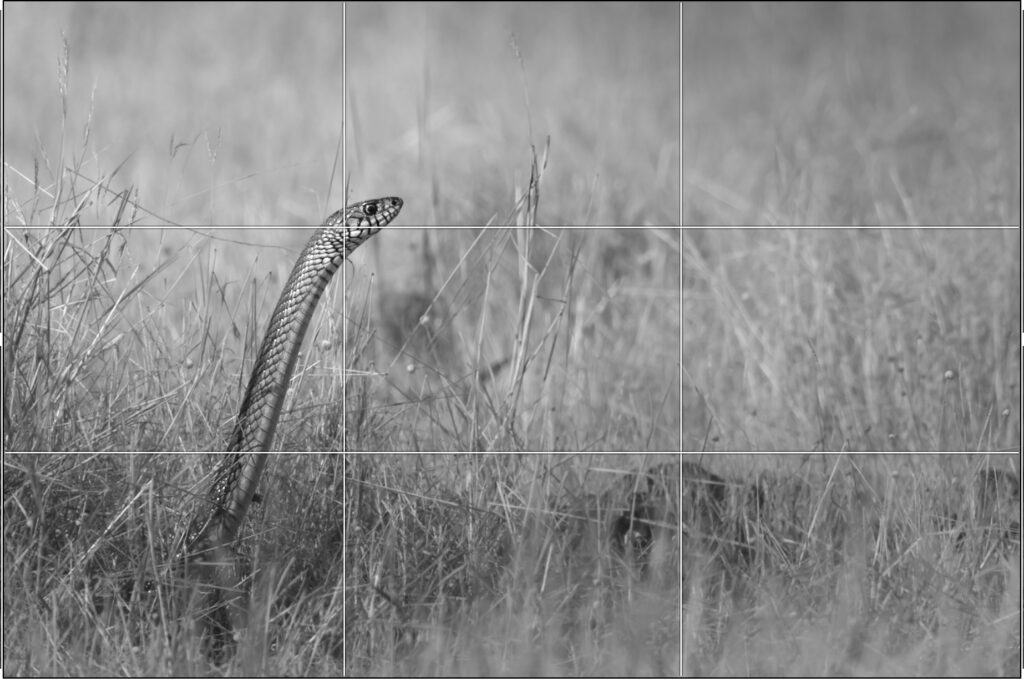

Divide the frame into 9 parts by using 2 horizontal and vertical lines. Horizontal and vertical lines intersect at 4 points.
When you are composing the picture, position the main object on a point where horizontal and vertical lines intersect.
Note – In your camera, turn the Grid option on. This will enable the Grid display while you photograph the image. ( Refer to your Camera Manual on how to enable the Grid option )
In the Image of the Snake, while we were driving through the Grasslands this Rat Snake peaked.
The snake’s eye lies on the intersection of the Horizontal and Vertical Lines.
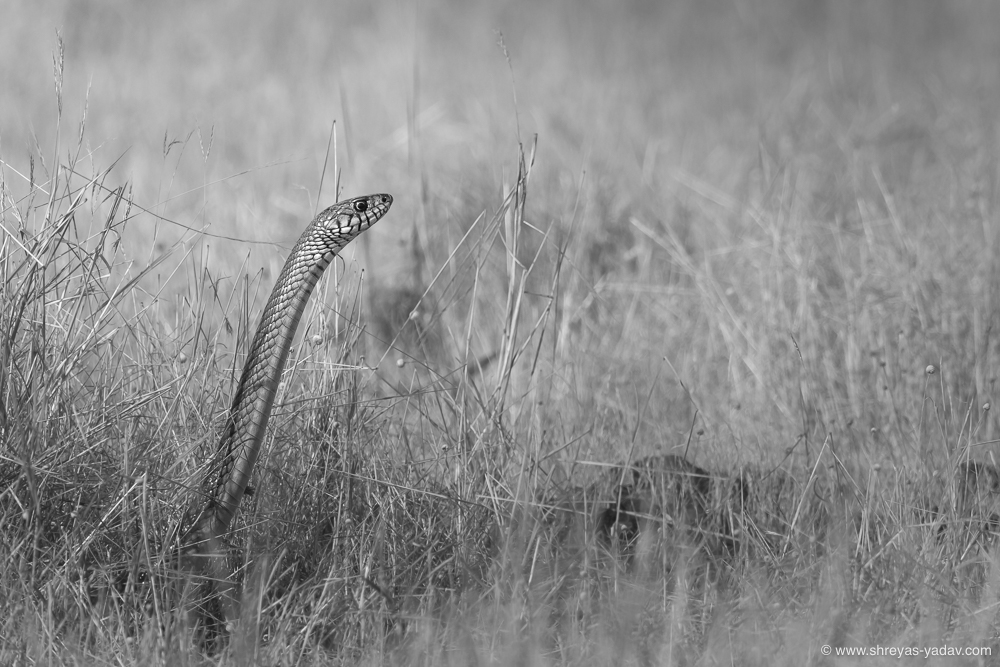
While editing the images as well, you can use the Rule of Thirds. While Cropping the image you can use the Rule of Thirds.
Similarly in the second image of the hoopoe bird, the eye and head of the bird are at the intersection of the Horizontal and Vertical line.
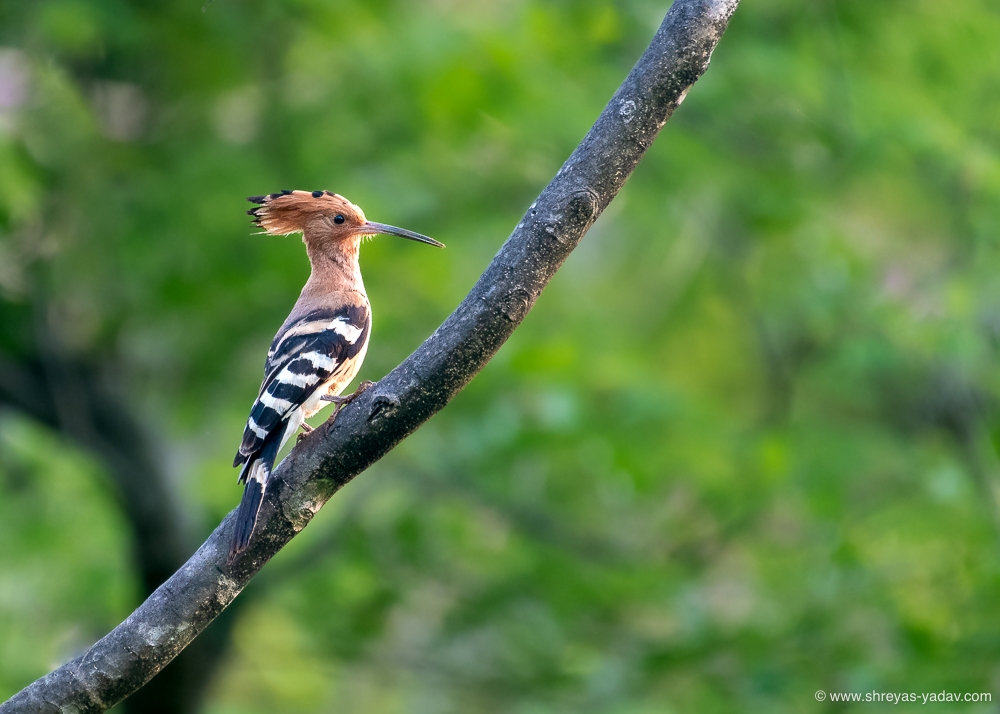
Using the Rule of thirds will significantly impact the visual appeal of an image.
2. Including the foreground object
The foreground can make some interesting Wildlife Images. Adding foreground to your wildlife images will give a fine feeling of the Wilderness.
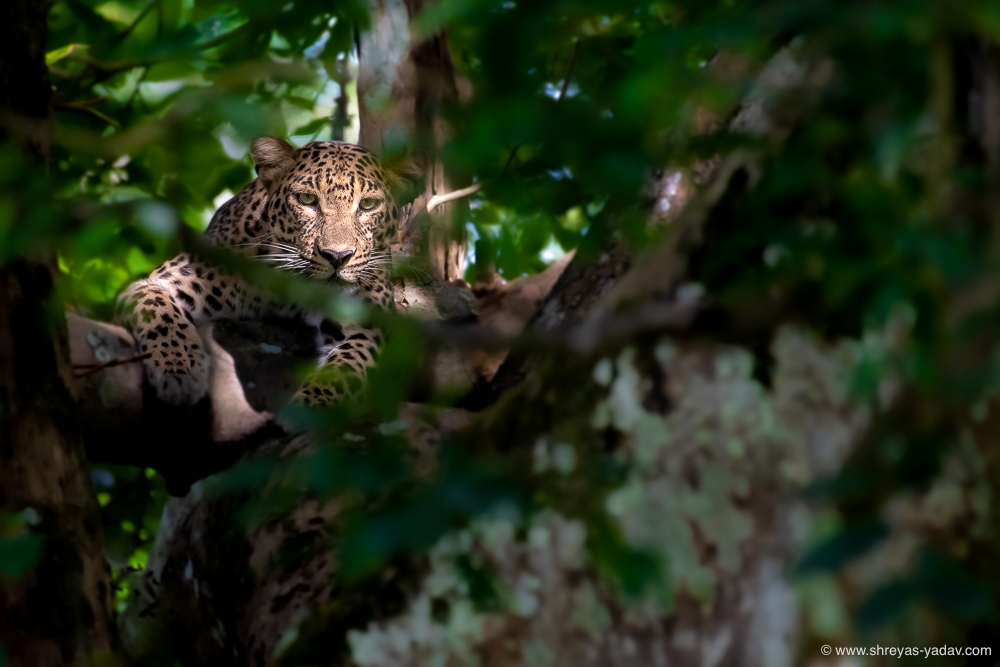
You can add rocks, grass, or trees as a foreground in the Wildlife Image.
In most of the wildlife images, you will have the main object and background. Include the foreground as well. And you will see – It adds depth to the picture.
The image is 2 Dimensional. Adding an interesting foreground object will make the image feel like 3-dimensional because of the depth.
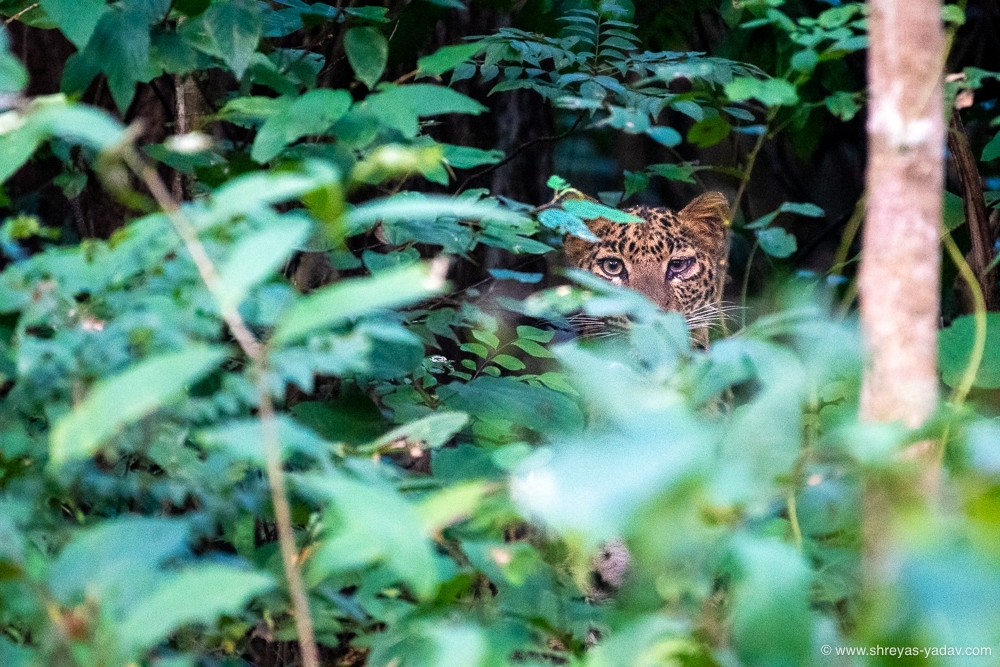
In both of the Leopard images, the Leopard was hiding behind the Bushes. The leopard was looking through the forest towards us.
Including the foreground such as trees and bush, gives a sense of leopard habitat. Also, it shows the stealthy leopard behavior.
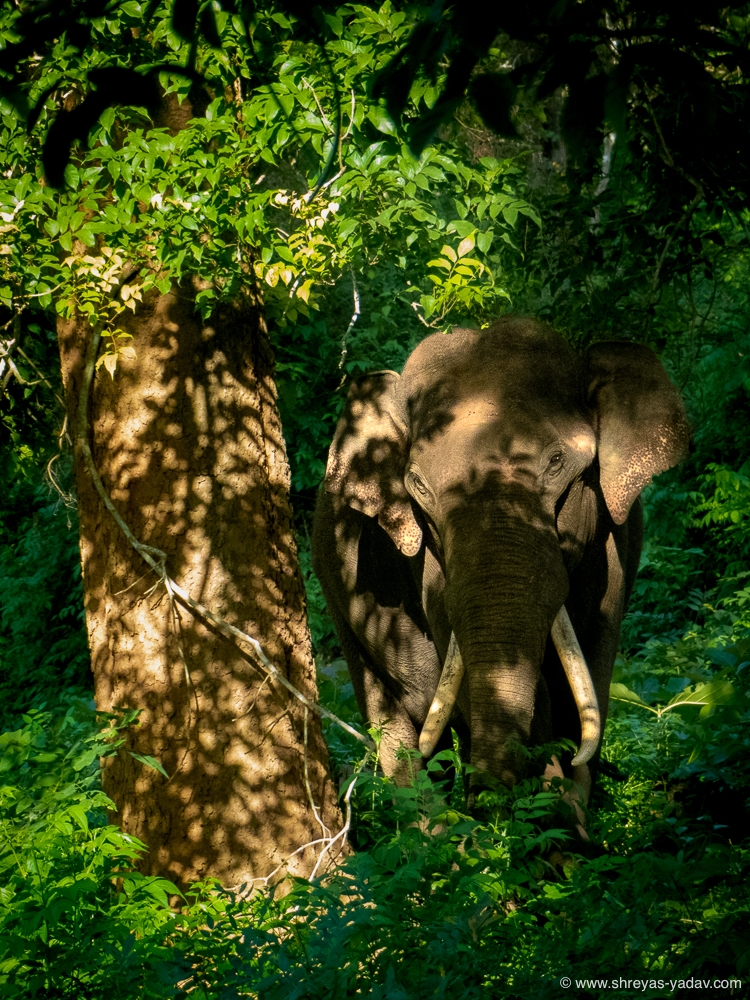
In the image of an Elephant, there is a tree canopy around an Elephant. This Canopy adds depth to the image.
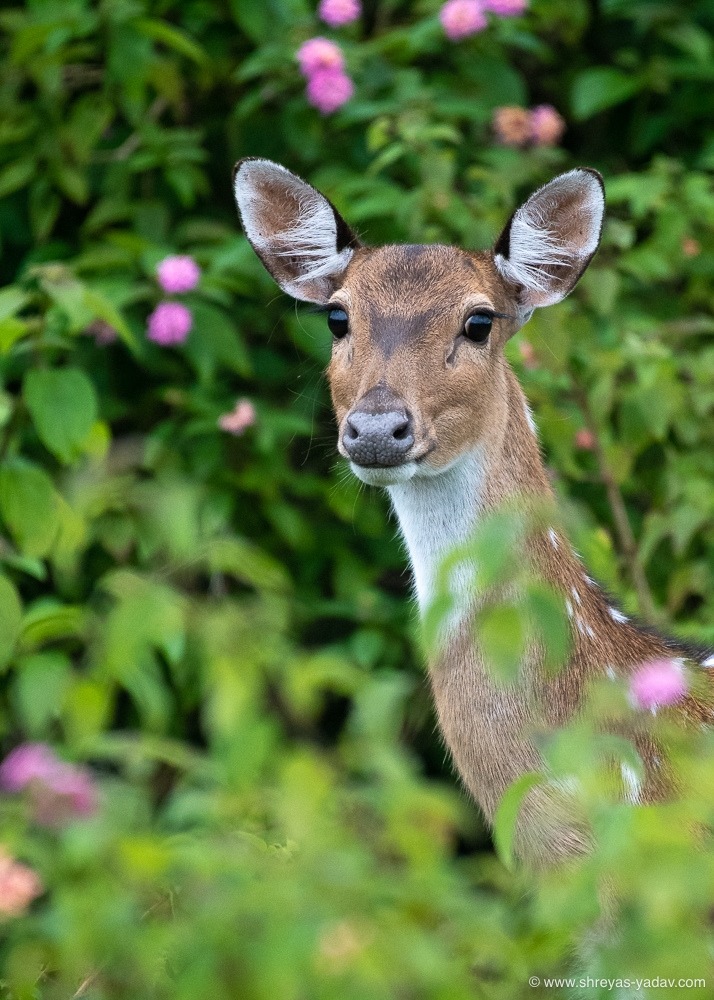
Also, you can photograph the Deer portrait here. However, if you include some plants in the foreground it adds depth to the image and makes it interesting.
3. Centered Composition
As compared to the Rule of Thirds, Centered Composition is different. In this composition, you keep the main wildlife object at the Center.
If you photograph the Wildlife exactly at the center, you can bring viewers’ attention to it. This composition will help you to strongly connect the viewer, with your Wildlife image.
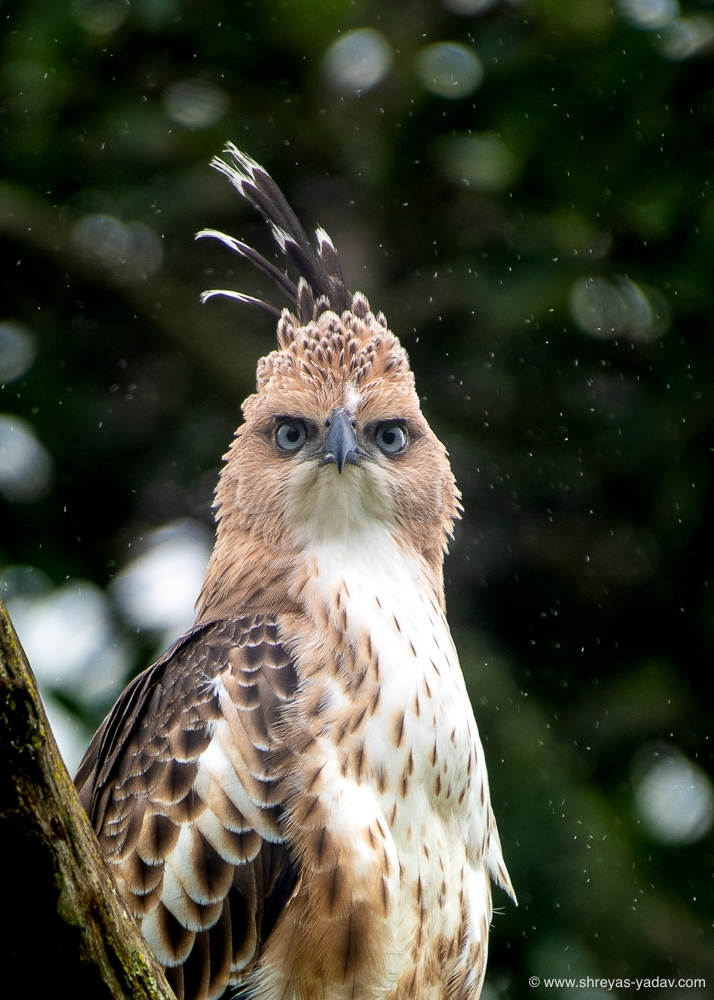
In the image of the Crested Hawk Eagle, I wanted to photograph and showcase the Intense eyes of the Eagle. Hence I composed the Eagle eyes at the center.
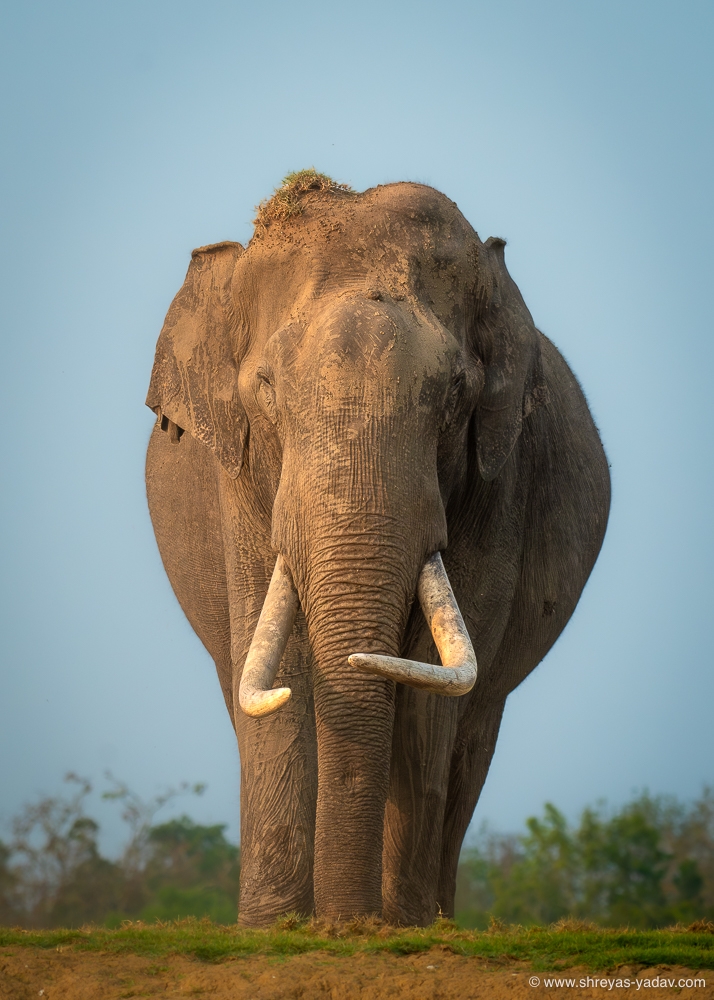
This big male Tusker was grazing in the golden evening light. Through this image, I wanted to highlight Elephant’s Big Tusks and Majestic Appearance. Hence, I used Centered Composition.
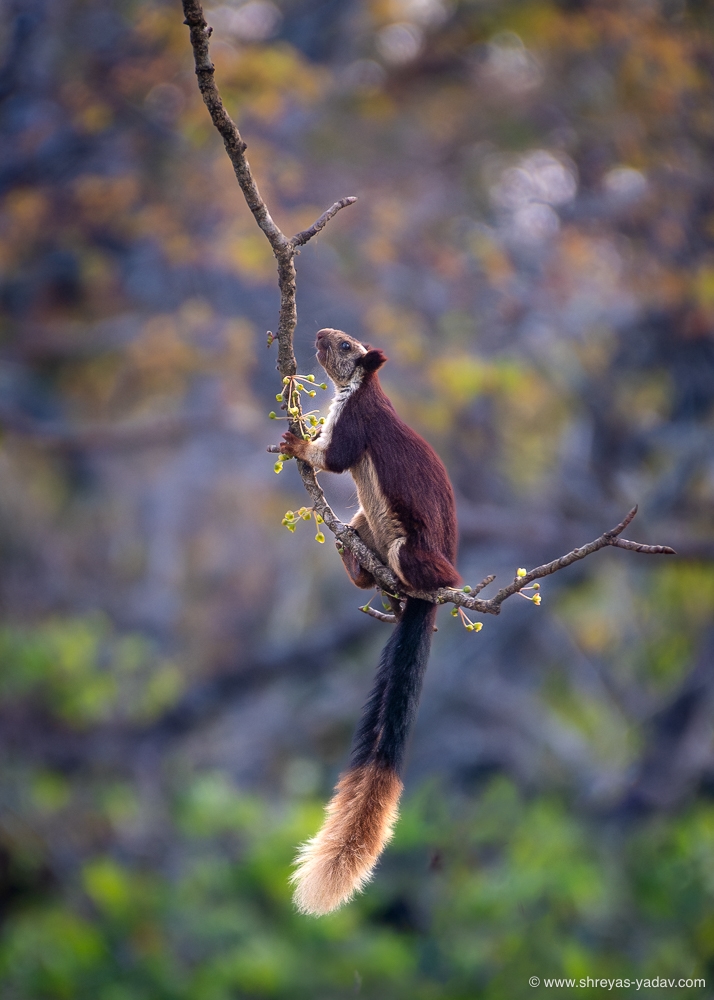
On the summer morning, this Giant Squirrel was busy picking the fruits on the Tree branch.
It was a beautiful moment to watch. Here I wanted to show the natural behavior of the Squirrel through the trees and branches.
Hence I used the Centered composition only to bring your Attention to the Fruit picking Giant Squirrel!
4. Symmetry
Symmetrical composition is a beautiful way to photograph Wildlife. Finding Wildlife in a Symmetrical way is Challenging. But if you observe Wildlife movements, you will find Incredible symmetrical compositions.
Once you find the symmetrical composition, photographing it – is a relatively easy part.
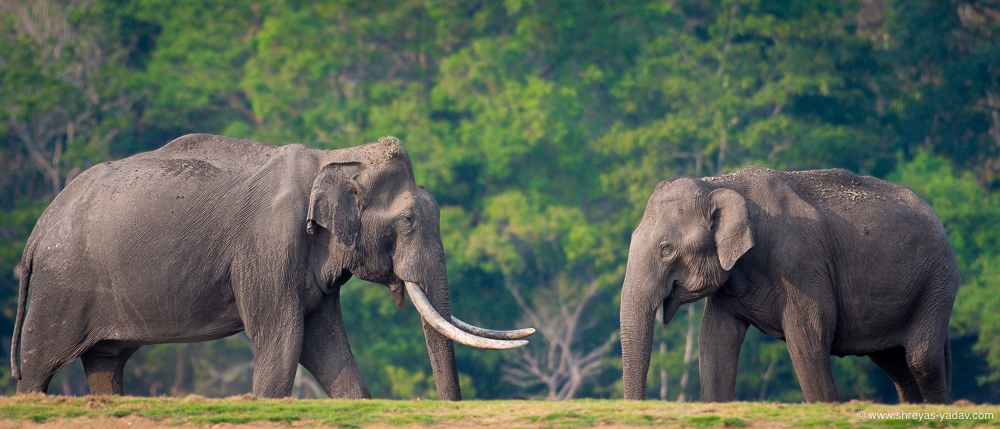
While we were in the boat, the herd of Elephants was grazing on the river bank.
There was a Big Male tusker in the group. I was closely observing the Tusker’s moves, There was a moment when this Male Tusker was standing exactly in front of a Female Elephant.
That’s the moment I was Looking for. As soon as both the Elephants were symmetrically facing each other – I clicked this image!
As we were driving through the forest, this pair of Woodpeckers was flying around.
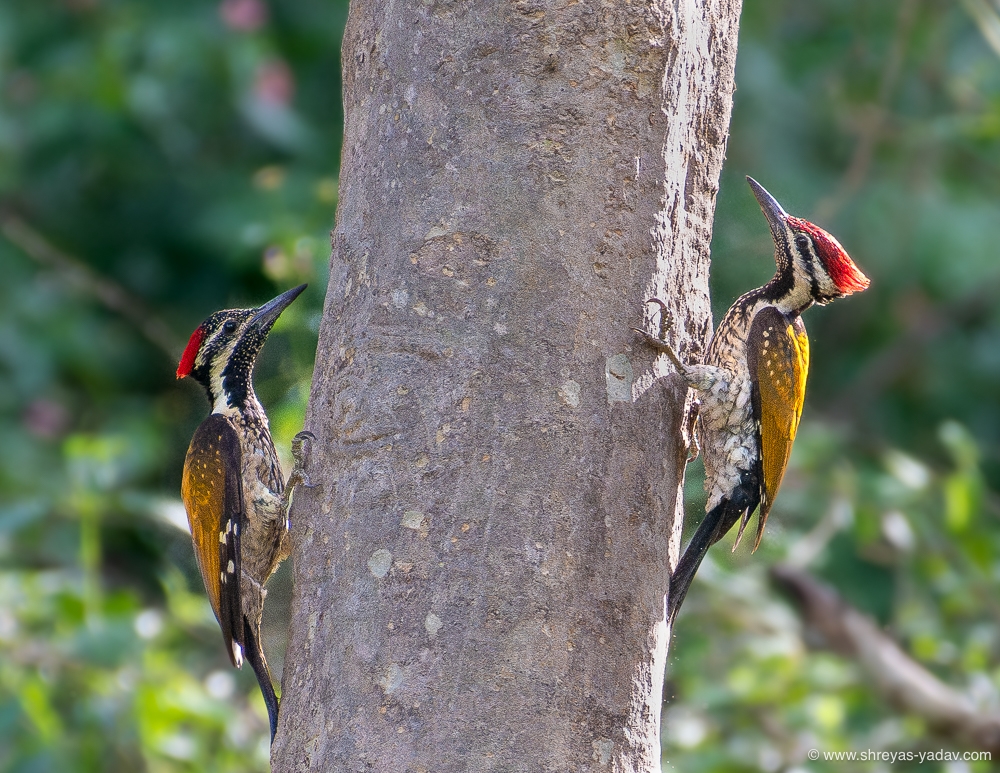
Both of the woodpeckers landed on the same tree. And both were moving continuously. I knew this was the moment I should be ready.
I was looking at the woodpeckers from the camera viewfinder. As soon as both Woodpeckers came on the opposite side of the tree trunk – Like a Symmetry I clicked multiple images. This one was the best among them.
You can see that adding two wildlife objects in a symmetrical composition takes your wildlife image to the next level.
5. Negative Space
Here is an image of an Osprey bird. This Osprey was trying to hunt for the fish. As the Osprey was flying around I clicked this image.
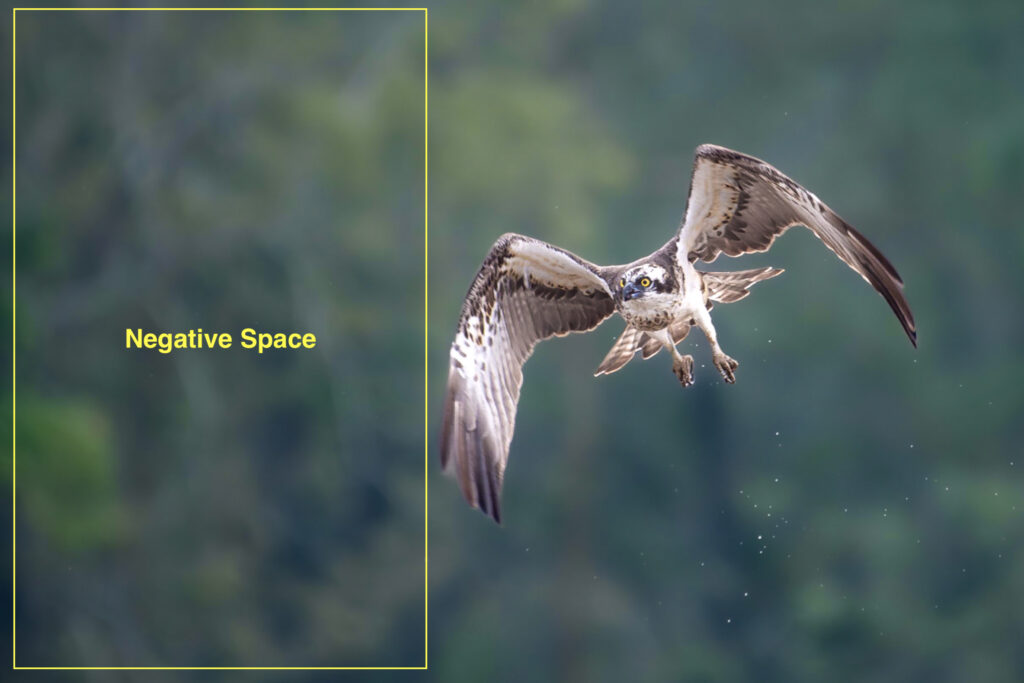
There is a space in which the Bird is looking and flying towards.
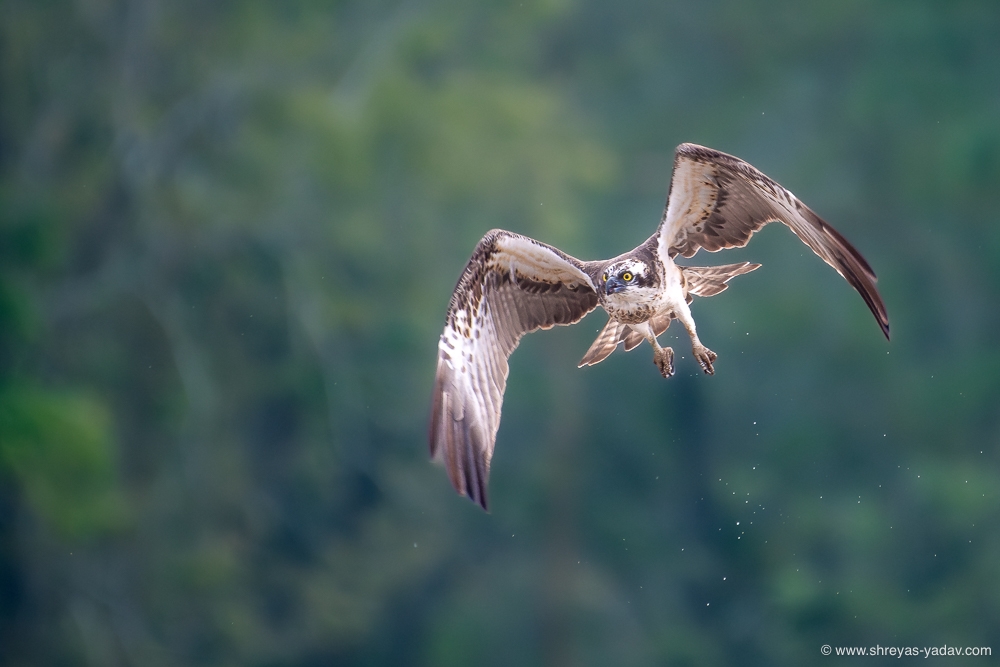
Similarly, this Spotted deer was looking at the back. There is a space in the direction where Deer is looking at.
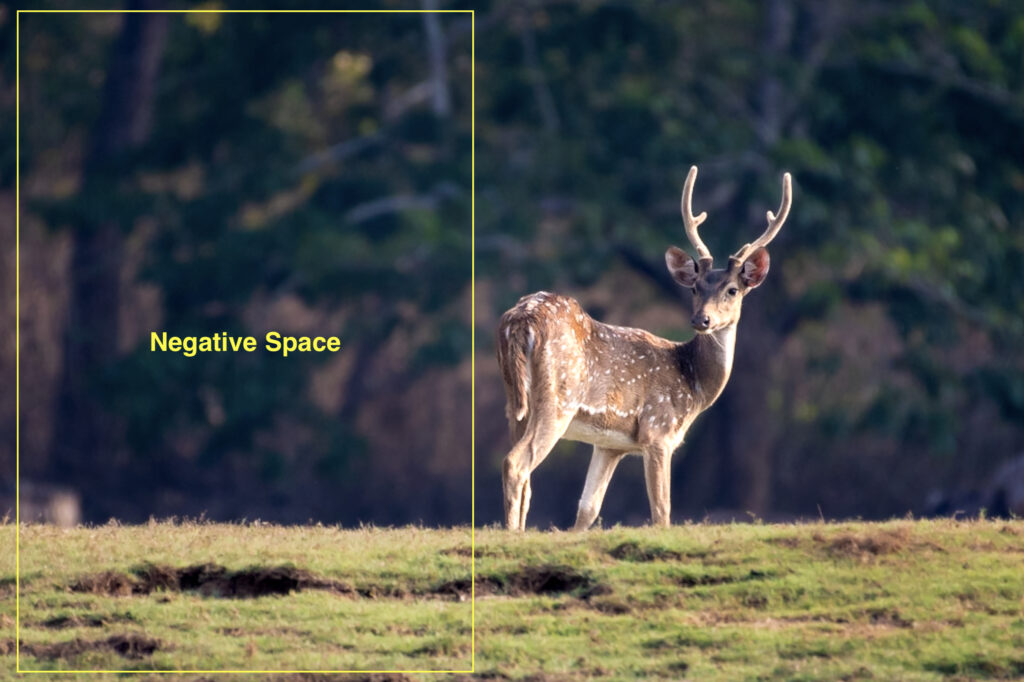
This space is called Negative Space.
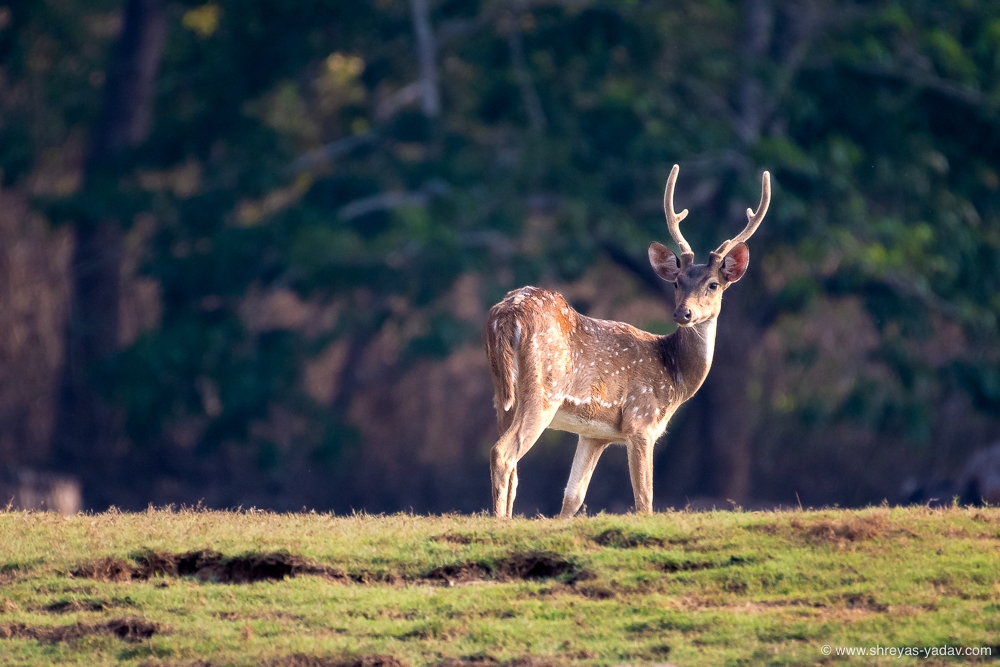
In your images, look where the main object is moving or looking at. Leave some space in the direction of the object’s movement. Also, have some space in the direction of what the object is looking at.
Composing a negative space will make the composition beautiful.
Now it’s your turn
I hope these easy yet effective composition tips will help you to create beautiful wildlife images.
Now I would like to hear from you
Which of the composition tips from today’s post you are going to try first?
Or do you have a question about the composition tips in this post?
Let me know by leaving a comment below right now.
Leave a Reply